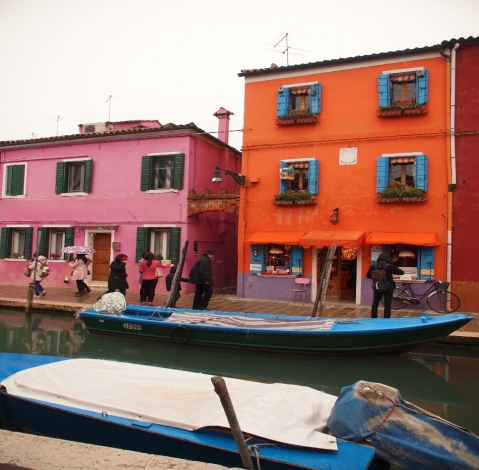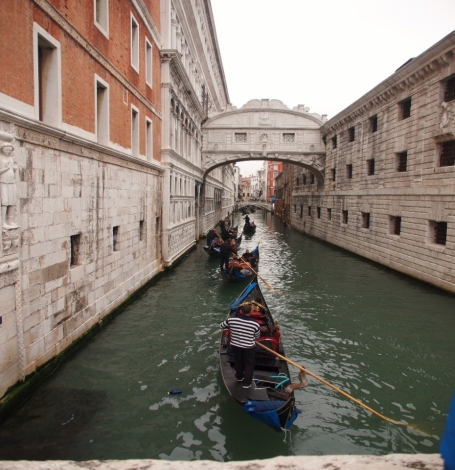Nu pierdeți cele mai bune locuri de muncă!
Abonează-te și săptămânal iți vom trimite un email cu ultimele locuri de muncă disponibile. Introdu adresa ta de email mai jos
VENICE GHOST TOUR
If you think you know Venice then maybe you won’t be surprised to know that it has its own ghosts, some maybe better forgotten. Biasio notorious as the child killer was executed in the main square by beheading and then his body chopped into 4 parts and hung on the four pillars as a reminder to Venetians what would happen to murderers. The beautiful Bovol Staircase is reportedly also haunted and screams heard in the deep of the night indicate foul play occurred here possibly during the late 15th century. Underground cemeteries hide secrets and as you walk down the Calle dei Assassini you can almost feel the chill that surrounds the darkness even on a warm summer night.
THE DOGE’S PALACE
The Doge’s who ruled Venice, did so until 1797. Their palace also known as Palazzo Ducale was their fortress where justice was delivered to those deemed unworthy of the Doge association. A Golden Book was housed here containing the names of those in favour with the royals. The imposing building was built on the edge of Saint Marks Square so that it was the first thing that ships saw as they approached. Along the piazzetta the columns are designed differently. Between the ninth and tenth columns death penalties were handed out. It is said that if a prisoner could walk around the third column – right on the edge of the lagoon, they would be spared. There is something to see when you visit Venice, an impossibility. To this day locals will not walk through many of these columns.
TEATRO LA FENICE
As with much of Venice, there are many treasures hidden behind old facades. The Teatro as suggested is an opera theatre with classical Baroque archicture and a decadent décor. Las Fenice translated to mean “the phoenix” has a striking resemblance to the mythical bird. Having been destroyed twice in its lifetime and faithfully restored to its 18th century former glory, the opera house is a must on any visit for its interior shows a splendor that will leave you speechless.
THE ISLANDS OF MURANO and BURANO
The first time we visited the city we decided that out time was better spent on the mainland wandering down the many alleys. After all who needs to try and carry fine breakable glass home. After discovering that there was a fascination in how Murano glass was made, we hoped on the ferry for the 20 minute journey across the “lagoon”. Be aware that the store owners will try very hard to convince you that life will never be the same without that precious vase or set of wine glasses. And the line “we ship anywhere in the world” will be repeated more than once. Just maybe you will find an irresistible piece that you cannot live without, you will always look at it and remember where you were when you bought it. BURANO is on the same ferry route. They depart every half hour to their next destination. The island of Burano is by far the most enchanting. Famous for its lace and tatted products, the island is in harmony with nature and its rainbow of colours. Each little dwelling is painted a different colour as they stand along the canals that wind their way through the island. Small boats anchored outside each dwelling become the Venetians mode of transport. Do stop at one of the divine little cafes even for just a cup of coffee to experience local hospitality.
THE GONDOLA EXPERIENCE
No visit to the canal city of the world would be complete without the experience of a cruise down the canals in a gondola. Depending on where you board will depend on which direction you take. You will soon see that it is a real business especially in the height of the tourist season. There are several ways to “acquire” your ride. The first is to book online before you leave home. Of course then you will know what you are spending. You can however take a chance at your bartering skills and negotiate the price from one of the back canals. You are more likely to get a price that is satisfactory to both parties if done this way than of you venture to the busy Saint Marks Square where the price is set at a higher fee. It is always a good idea to test this out before you agree to the journey as the prices vary quite a lot. Research is your best option.
THE RIALTO BRIDGE
The Rialto Bridge is one of the best known land marks on the GRAND CANAL. It was the first bridge over the canal connecting two sides of the town. Originally built in 1180, it was later replaced by marble in 1588. I often hear it referred to as elegant but a little like traveler beware, it has changed even over the years we have visited. Graffiti has replaced old signage and many small market shops have been allowed to crowd both sides of the bridge almost engulfing it. It is still worth fighting for a spot to take those memorable photos of the water taxis and barber shop poles.
THE BASILICA SAN MARCO
A blend of Gothic, Byzantine, Romanesque and Renaissance styles all present the wealth of Venice. Construction on the Basilica began in 828 by the Doge’s to house the body of St Mark. You will not see opulence such as this anywhere in Europe. The gold is almost blinding as you wind your way through the many columns and altars. The best time to view is on an after hours tour. Even in the flooded seasons the crowds are enormous.
WINE PAIRING AND VENETO DINNER
There are many very reasonably priced restaurants throughout the canals no matter which way you turn. Dining at one of the many prestigious restaurants located at St Mark’s Square offering a four course meal is in a world of its own with each selection being paired with fine Italian wines. This is an experience you will never forget. Each venue has a menu on the walkway for you to make your selections before committing to any particular establishment.
CICCHETTI AND WINE TOUR IN THE JEWISH GHETTOS.
It pays to do your homework before entering Venice or you might just miss this exciting tour. The Bacari or wine bars are dotted in every nook around the city. They serve “Cicchetti” or bite sized morsels of everything from cheeses to hot savories. Situated in the Cannaregio district, the Jewish area holds a swag of historical memories. It is said that this is where Shakespeare found his inspiration for his famous work - Merchant of Venice.
THE ISLAND OF TORCELLO
The island is on the ferry stop, not far from the island of Burano. While it plays home mostly to rabbits and sheep, it was once a home to over 20,000 people. The island is where Venice began in 683 and there are still remnants of its Byzantine heritage. The church of Santa Fosca and the last remaining Palazzo houses may artifacts. The island is a magical place so why not have lunch at the Locandra Ciprani an Earnest Hemingway favourite.
Sign in to publish a comment


Be the first to comment on this post.